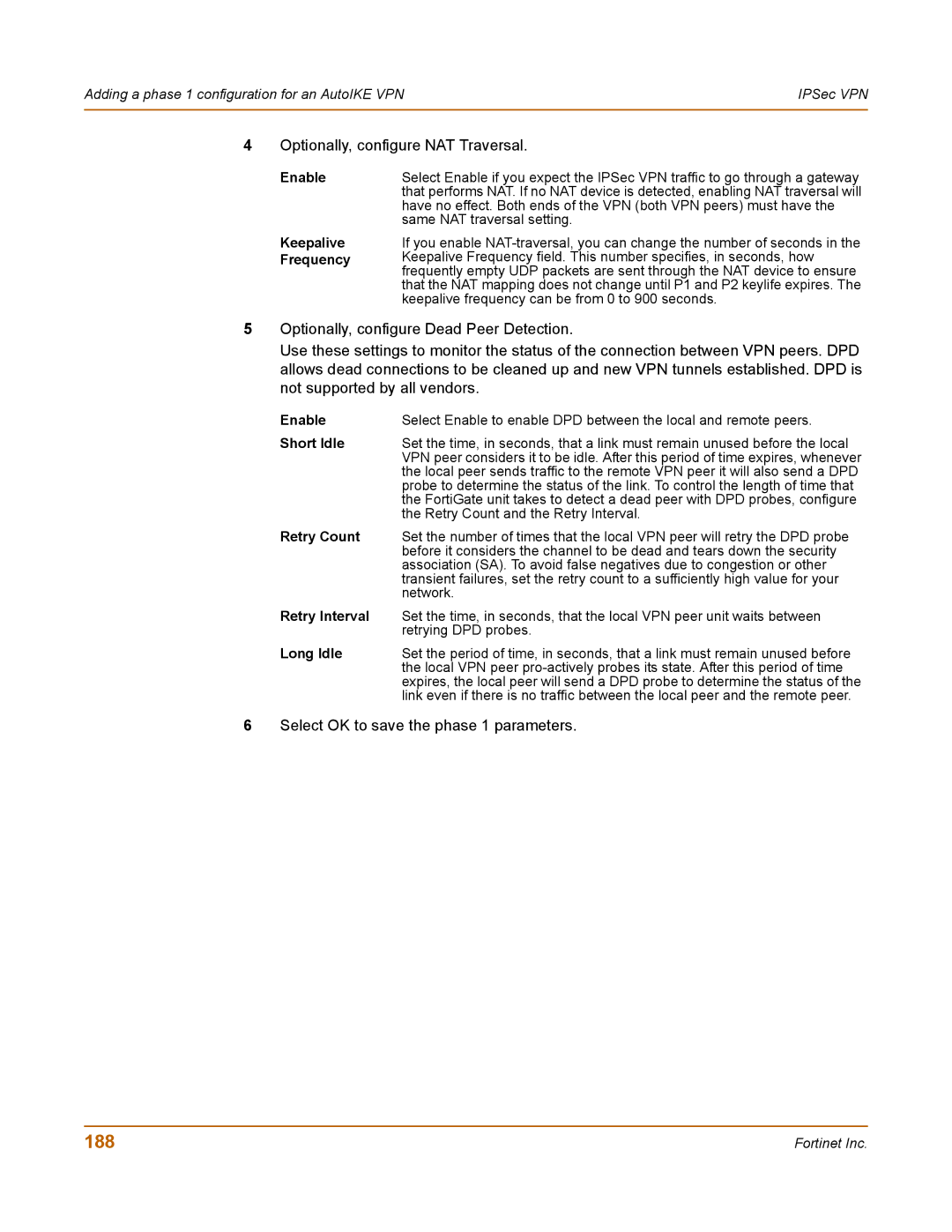Adding a phase 1 configuration for an AutoIKE VPN | IPSec VPN |
|
|
4Optionally, configure NAT Traversal.
Enable | Select Enable if you expect the IPSec VPN traffic to go through a gateway |
| that performs NAT. If no NAT device is detected, enabling NAT traversal will |
| have no effect. Both ends of the VPN (both VPN peers) must have the |
| same NAT traversal setting. |
Keepalive Frequency
If you enable
5Optionally, configure Dead Peer Detection.
Use these settings to monitor the status of the connection between VPN peers. DPD allows dead connections to be cleaned up and new VPN tunnels established. DPD is not supported by all vendors.
Enable | Select Enable to enable DPD between the local and remote peers. |
Short Idle | Set the time, in seconds, that a link must remain unused before the local |
| VPN peer considers it to be idle. After this period of time expires, whenever |
| the local peer sends traffic to the remote VPN peer it will also send a DPD |
| probe to determine the status of the link. To control the length of time that |
| the FortiGate unit takes to detect a dead peer with DPD probes, configure |
| the Retry Count and the Retry Interval. |
Retry Count | Set the number of times that the local VPN peer will retry the DPD probe |
| before it considers the channel to be dead and tears down the security |
| association (SA). To avoid false negatives due to congestion or other |
| transient failures, set the retry count to a sufficiently high value for your |
| network. |
Retry Interval | Set the time, in seconds, that the local VPN peer unit waits between |
| retrying DPD probes. |
Long Idle | Set the period of time, in seconds, that a link must remain unused before |
| the local VPN peer |
| expires, the local peer will send a DPD probe to determine the status of the |
| link even if there is no traffic between the local peer and the remote peer. |
6Select OK to save the phase 1 parameters.
188 | Fortinet Inc. |
